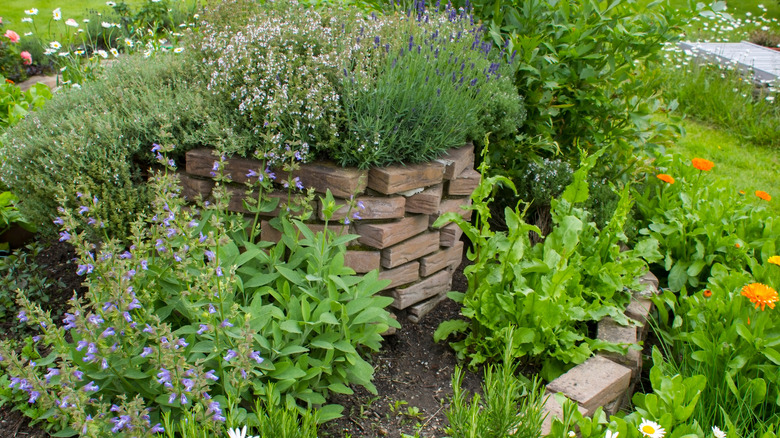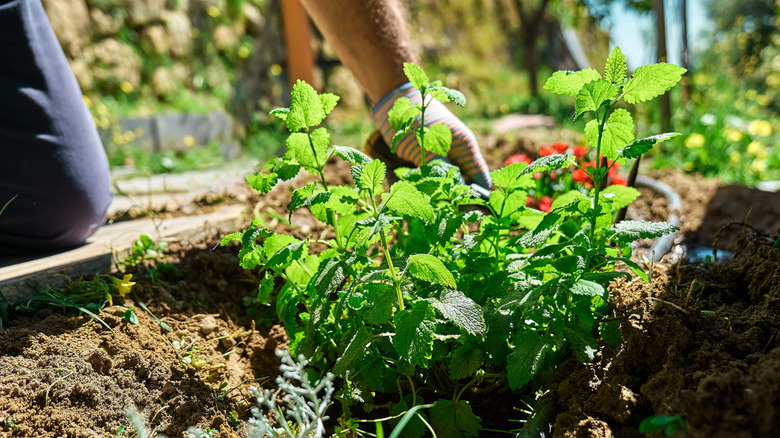Plant This Easy-To-Grow Herb In August For A Flavorful Harvest Before The First Freeze
With a smattering of cool days, August can have gardeners itching to get their hands in the soil and add more plants to the garden. Those hoping to expand their herb gardens may want to take advantage of the days of late summer to plant lemon balm (Melissa officinalis), an easy-to-grow perennial herb with a citrusy scent that's a delight for making herbal teas. And as a deciduous plant, lemon balm's leaves won't be harvestable all winter long, so you'll have to enjoy them in the fall before frost arrives by planting transplants in August.
With its bright green, wrinkled leaves, lemon balm is one of the flavorful herbs that will return to your garden on their own each year. The aromatic foliage of this fast-growing, low-maintenance herb is held on bushy plants that can be grown as a ground cover and reach about 24 inches in height. You can grow this deer resistant relative of mint as a perennial in USDA Hardiness Zones 3 through 7.
How to plant lemon balm in August for a fall harvest
You'll need to know a few gardening details if you decide you want to grow and care for lemon balm. Since this easy-going herb spreads vigorously, you may want to consider growing it in a container instead of planting it directly in the ground. Once established, lemon balm thrives in dry to moderately moist conditions, in a wide range of soil-types, and can grow in either full sun or part shade. While you should avoid transplanting lemon balm and other perennials during extreme heat, a stretch of cool August days can offer an excellent opportunity to expand your herb garden. After this flavorful herb has settled into your garden, you won't have to worry about any unexpected heatwaves since lemon balm is one of the easy to grow herbs that can take the heat and will thrive all summer long.
Keep in mind that once freezing temperatures arrive, the leaves of this deciduous plant will be damaged by the cold, so take advantage of fall weather to make your harvest. These no-fuss plants bounce back easily after pruning, and you can cut lemon balm's foliage back halfway to the ground without harming the plant. This citrusy herb can be used to make soothing herbal teas, but it can also be used to flavor food, such as soups and salads.

